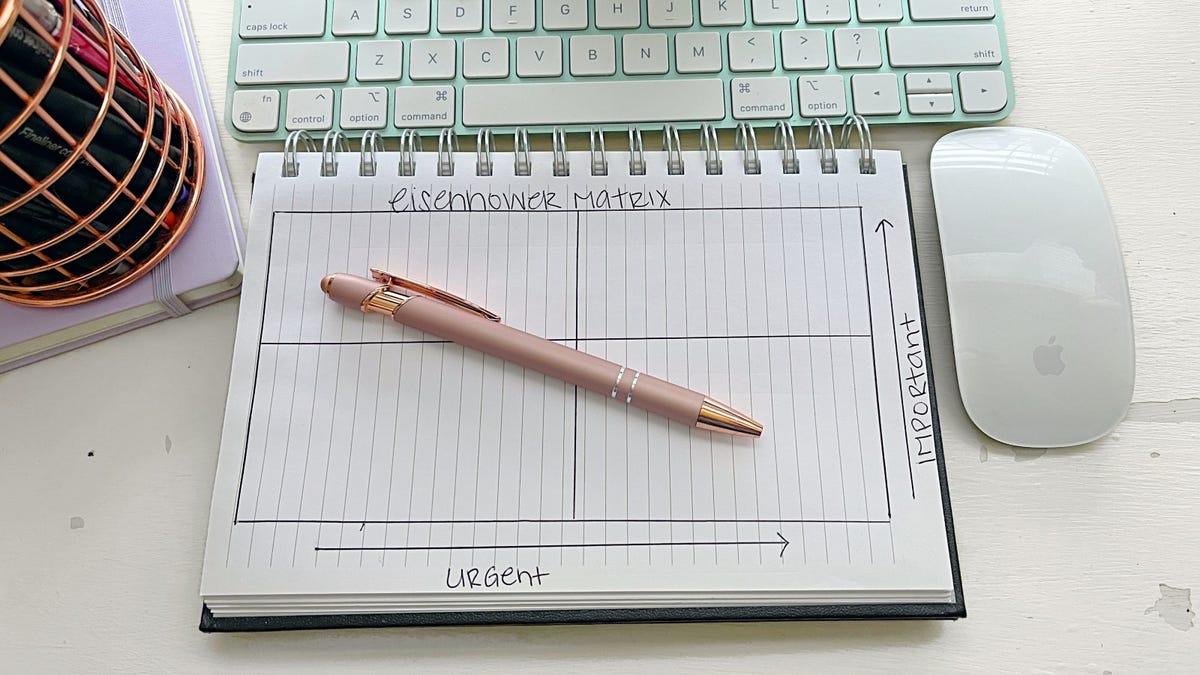
When you hear the term Eisenhower Matrix, you probably imagine some sort of math formula—like the Pythagorean theorem. Sure, this matrix is all about bringing order to chaos, but it’s also all about helping you be more productive.
So what is the Eisenhower Matrix and how can it make you more productive?
What Is the Eisenhower Matrix?
The Eisenhower Matrix comes from former U.S. President Dwight D. Eisenhower, and these days, it’s probably more popular than ever before. Because if you feel like you’ve got an ever-expanding list of things to get done, it’s designed to help.
“What is important is seldom urgent, and what is urgent is seldom important,” President Eisenhower famously said.
In other words, the things that need to be done right now often aren’t the most important tasks in our lives. Important tasks may have less-urgent timelines, but that doesn’t make them unimportant. It’s easy to get caught up in focusing only on what needs to get done right away. But only thinking about those tasks can lead you to neglect truly important to-do items.
LEUCHTTURM1917 Medium A5 Ruled Hardcover Notebook
Grab a new notebook to jot down your tasks and your matrix.
Urgent tasks require immediate attending to, while important tasks deal with the long-term: they’re the things that will most benefit you in the future. You may not need to do them right now. But if you always put off important tasks in favor of urgent ones, you’ll struggle to meet your future goals and improve your life in any substantial way.
For example, if you hate your job and want a new one, sending out applications is an urgent task. However, the more important task is figuring out exactly what you hate about your job, so you don’t run into the same problems at a new job. That introspection might not be urgent, but it’s arguably more important than sending out applications. If you do the important task of self-reflection and career planning first, you’ll be better at figuring out which jobs you should actually apply for.
How Do You Build an Eisenhower Matrix?

The Eisenhower Matrix isn’t just an abstract concept, though. You’re meant to put pen to paper and put the idea into practice.
Your first step is to jot down all of your current projects or tasks. If you have an existing to-do list, that step is already done. Then, you create your matrix. Essentially, this is a box with four quadrants. The four sections (with examples) are:
- Important, but Not Urgent: Setting up a retirement account, working out, scheduling a dental cleaning
- Urgent and Important: Feeding your pet, submitting your timesheet
- Not Important, Not Urgent: Hitting inbox zero, swiping through Tinder, redecorating your living room
- Urgent, but Not Important: Getting a haircut, washing the car
You’ll put each of your projects or tasks into the correct quadrant, so you can figure out what order to do them in. You can do this on paper, in an app, or anywhere that suits you.
Anecdote 2023 Planner
Once you’ve gotten your matrix complete, use a traditional planner to schedule out your tasks.
Keep in mind that just because something is labeled not important doesn’t mean you shouldn’t do it. It’s probably worthwhile to finally redecorate or to get a new haircut. But while these tasks will make you feel busy and productive, they ultimately won’t do a whole lot for your future. You can easily pack your days with not important tasks, feel busy all the time, and wonder why you’re not getting any closer to achieving your bigger goals.
The not important” tasks also tend to take you away from the important tasks. The important, but not urgent quadrant is the easiest one to procrastinate on since it involves things that might be difficult or intimidating, and that don’t need to get done right away. However, this is the quadrant that will benefit you most in the long run.
By creating your matrix, you shift the way you’re prioritizing your tasks and will hopefully get the most bang for your productive buck.
FIOVER 5-Piece Gel Pens
If you’re going to be dissecting your goals and tasks, do it in style with these pens.
How Can the Eisenhower Matrix Help You Reach Goals?
Once you’ve put your projects, tasks, and activities into the four quadrants of the Eisenhower Matrix, it’s time to look at how you can free up your schedule for those important, but not urgent things.
If you feel like you’re always busy, take a look at what quadrant the things that you’re busy with fall into. Chances are, many of them are not important and not urgent, or they’re urgent, but not important.
Think about delegating tasks from the urgent, but not important quadrant. Maybe you could hit the carwash instead of washing your car by hand, for example. And consider getting rid of some tasks from the not important, not urgent quadrant altogether. Maybe you could give up on your “inbox zero” goal since it won’t make a meaningful difference in the long run.
VIZ-PRO Magnetic Whiteboard Dry Erase Board
Keep your matrix visible by using a whiteboard instead of a notebook.
Once you’ve freed up some space in your schedule, start adding important, but not urgent tasks into your life. For example, if you cut back on social media use (which is likely not important and not urgent) by a half hour each day, you could use that time to work out which is an important, but not urgent task instead.
Of course, things in the urgent and important section need to get done right away, and they matter. But the other three quadrants are where things can be a bit more fluid. By cutting back on not important tasks, you’ll have more time for the important stuff, which will have a tangible effect on your future.
Even if you never actually take this practice on, the Eisenhower Matrix gives you a useful way to reflect on how you spend your days. Your to-do lists will become a little more manageable once you think about them this way because you can see what’s really important versus what only feels like it is. This frees you from busy work, so you can focus on life-improving work, avoid burnout, and find more free time in your days.





